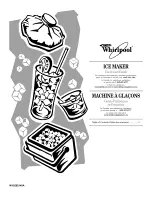
43
B3963
www.domo-elektro.be
EN
INGREDIENTS
Baking a great bread will largely depend on 3 main factors: quality, freshness and correct measurement of
quantities.
Caution: never exceed the maximum capacity of your bread maker! (1000 g) Never use more than these
maximum quantities of the following ingredients for 1 baking session:
Flour: 715 g max.
Yeast: 22 g fresh yeast or 4+1/4 teaspoons dry yeast max.
Water: 460 ml max.
FLOUR
Flour is the basic component of bread. The weight of the flour varies, depending on the type of flour used.
It is therefore absolutely neccesary that you weigh the right quantity on a pair of scales. Please make sure
you buy a variety of flour which is suitable for bread making. Check the packaging.
GLUTEN
Gluten is a natural ingredient of flour and stimulates the bread to rise.
YEAST
Yeast is a micro-organism found on several vegetable foodstuffs. Yeast converts sugars into alcohol and
carbon dioxide. This ability is ideal for the bread to rise and to make it lighter and easier to digest. We
recommend the use of dry yeast for this bread maker. This (granular) yeast is easier to work with, keeps
for a longer time than fresh yeast and generally gives you a better result as well.
SALT
Salt does not only lend the bread a certain flavour but equally regulates the activity of the yeast,
strengthens the dough and prevents the bread from rising too hard.
BUTTER / OIL
Butter and oil improve the general taste of the bread and equally soften it. Butter or oil should both be at
room temperature when you add them to the other ingredients.
SUGAR
Sugar is the nutritional source for the yeast and is of great importance for the bread’s rising process. You
can use plain white sugar, brown sugar, syrup or honey. Sugar lends the bread a certain soft and delicate
flavour, increases its nutritional value and also renders the bread less perishable. Attention: you should
not use unrefined sugar or sugar lumps, when you want to make e.g. cinnamon bread, for they can
damage the non-stick coating of the bread pan.
WATER
When the flour mixes with the water, the gluten will form and air can no longer enter, thus enabling the
bread to rise. At normal temperature you should use tepid water (± 20 à 25 °C) to make bread: cold water
will not activate the yeast and warm water will achieve the opposite result.
MILK
Milk adds greatly to the colour of the bread (brown for the crust, creamy on the inside), improves the
overall taste of the bread and increases its nutritional value. Should you choose to use fresh milk, do not
forget to reduce the amount of water, in order to maintain the right level of humidity.
















































